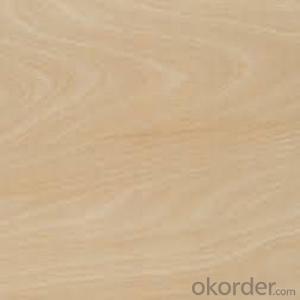CDX Plywood: A Comprehensive Guide for the Curious and Skeptical
So, you’ve heard about CDX plywood and you’re wondering what the fuss is all about? Well, buckle up, because we’re about to dive into the world of engineered wood and explore the ins and outs of this popular material. Whether you’re a seasoned DIY enthusiast or a complete newbie, this guide is here to provide you with everything you need to know before you make your next plywood purchase.
What is CDX Plywood?
CDX stands for ‘Construction Dimensional Crossband,’ which is a fancy way of saying it’s a type of plywood that’s designed for construction purposes. It’s made from multiple layers of wood veneer that are glued together, with the outer layers running perpendicular to the inner layers. This crossbanding helps to increase the strength and durability of the plywood, making it an ideal choice for a variety of applications.
Why Choose CDX Plywood?
There are several reasons why CDX plywood has become a go-to material for many builders and DIYers. Here are a few of the top benefits that make it a popular choice:
1. Affordability: CDX plywood is generally more affordable than other types of plywood, making it an attractive option for those on a budget.
2. Strength and Durability: The crossbanding of the veneer layers adds strength and makes the plywood less prone to warping or splitting.
3. Versatility: It can be used for a wide range of applications, from framing to sheathing, and even for making furniture.
4. Availability: It’s widely available at most home improvement stores, making it easy to find and purchase.
5. Simplicity: The simple design of CDX plywood makes it easy to work with, even for those with limited woodworking experience.
The Environmental Impact
As with any building material, it’s important to consider the environmental impact of using CDX plywood. Here’s a quick look at the eco-friendliness of this material:
– Sustainability: The trees used to make CDX plywood are typically sourced from sustainably managed forests.
– Renewability: Wood is a renewable resource, which means that it can be replaced over time, reducing the overall environmental footprint.
– Energy Efficiency: Wood is an excellent insulator, making it a good choice for energy-efficient construction.
– Biodegradability: Unlike some synthetic materials, CDX plywood is biodegradable at the end of its life cycle.
How to Choose the Right CDX Plywood for Your Project
When it comes to selecting the right CDX plywood for your project, there are a few key factors to consider:
1. Grade: Look for the grade of the plywood, which indicates the quality of the wood and the presence of any defects.
2. Thickness: Choose the appropriate thickness based on the structural requirements of your project.
3. Size: Consider the size of the plywood sheets to ensure they fit your project needs and to minimize waste.
4. Exposure: Determine if the plywood will be exposed to moisture and choose a type that is suitable for the conditions.
5. Adhesive: Pay attention to the type of adhesive used in the plywood, as this can affect its performance and safety.
Working with CDX Plywood
Now that you know what CDX plywood is and why it’s a great choice for various projects, let’s talk about how to work with it. Here are some tips for getting the most out of your plywood:
1. Cutting: Use sharp tools and a steady hand to ensure clean cuts.
2. Sanding: Smooth out any rough edges with sandpaper to prevent splinters and improve the finish.
3. Painting or Staining: Apply paint or stain as desired to enhance the appearance and protect the plywood.
4. Joining: Secure pieces of CDX plywood together using screws, nails, or adhesive for a strong bond.
5. Safety: Always wear protective gear when working with plywood to prevent injuries.
Common Uses of CDX Plywood
CDX plywood is a versatile material that can be used in a wide range of applications. Here are some of the most common uses:
1. Framing: It’s perfect for constructing the framework of buildings and structures.
2. Sheathing: Use it to cover the exterior of a building to provide a stable surface for siding or other finishes.
3. Subflooring: CDX plywood makes an excellent choice for the base layer of flooring.
4. Roof Sheathing: It can be used to create the base for roofing materials.
5. DIY Projects: From furniture to storage solutions, CDX plywood is a popular choice for creative projects.
6. Scaffolding: It can be used in the construction of temporary work platforms.
7. Paneling: CDX plywood can be used as wall or ceiling paneling for a rustic look.
The Downside of CDX Plywood
While CDX plywood has many advantages, it’s not without its drawbacks. Here are a few things to keep in mind:
1. Appearance: The rougher side of the plywood may not be suitable for applications where a smooth finish is required.
2. Moisture Sensitivity: It’s not recommended for areas with high moisture levels unless it’s treated for moisture resistance.
3. Weight: It can be heavier than other types of plywood, making it more difficult to handle and transport.
4. Limited Aesthetic Appeal: The appearance may not be as pleasing as other types of plywood, which could be a concern for some projects.
In Conclusion
CDX plywood is a versatile and affordable option for a variety of construction and DIY projects. With its strength, durability, and ease of use, it’s no wonder that it’s become a favorite among builders and DIYers alike. However, it’s important to weigh the pros and cons and consider the specific requirements of your project before making a decision. Remember, the right choice of material can make all the difference in the success of your project. So, the next time you’re at the home improvement store, give CDX plywood a second glance – it might just be the perfect fit for your needs.

